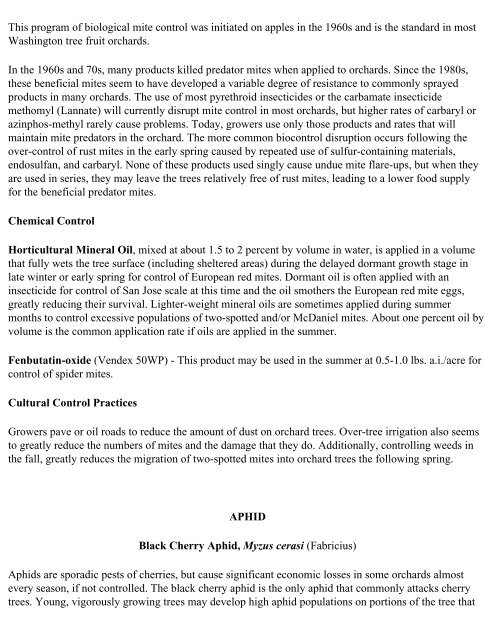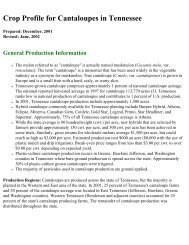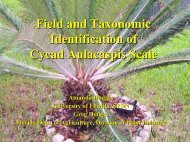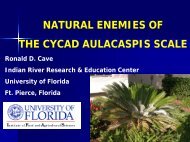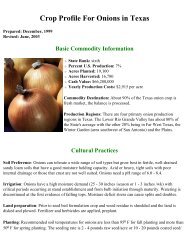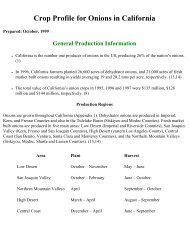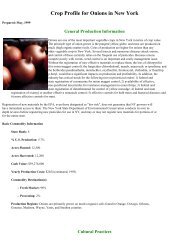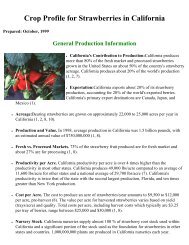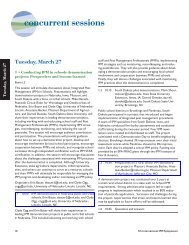Crop Profile for Cherries (Sweet) - Regional IPM Centers
Crop Profile for Cherries (Sweet) - Regional IPM Centers
Crop Profile for Cherries (Sweet) - Regional IPM Centers
You also want an ePaper? Increase the reach of your titles
YUMPU automatically turns print PDFs into web optimized ePapers that Google loves.
This program of biological mite control was initiated on apples in the 1960s and is the standard in most<br />
Washington tree fruit orchards.<br />
In the 1960s and 70s, many products killed predator mites when applied to orchards. Since the 1980s,<br />
these beneficial mites seem to have developed a variable degree of resistance to commonly sprayed<br />
products in many orchards. The use of most pyrethroid insecticides or the carbamate insecticide<br />
methomyl (Lannate) will currently disrupt mite control in most orchards, but higher rates of carbaryl or<br />
azinphos-methyl rarely cause problems. Today, growers use only those products and rates that will<br />
maintain mite predators in the orchard. The more common biocontrol disruption occurs following the<br />
over-control of rust mites in the early spring caused by repeated use of sulfur-containing materials,<br />
endosulfan, and carbaryl. None of these products used singly cause undue mite flare-ups, but when they<br />
are used in series, they may leave the trees relatively free of rust mites, leading to a lower food supply<br />
<strong>for</strong> the beneficial predator mites.<br />
Chemical Control<br />
Horticultural Mineral Oil, mixed at about 1.5 to 2 percent by volume in water, is applied in a volume<br />
that fully wets the tree surface (including sheltered areas) during the delayed dormant growth stage in<br />
late winter or early spring <strong>for</strong> control of European red mites. Dormant oil is often applied with an<br />
insecticide <strong>for</strong> control of San Jose scale at this time and the oil smothers the European red mite eggs,<br />
greatly reducing their survival. Lighter-weight mineral oils are sometimes applied during summer<br />
months to control excessive populations of two-spotted and/or McDaniel mites. About one percent oil by<br />
volume is the common application rate if oils are applied in the summer.<br />
Fenbutatin-oxide (Vendex 50WP) - This product may be used in the summer at 0.5-1.0 lbs. a.i./acre <strong>for</strong><br />
control of spider mites.<br />
Cultural Control Practices<br />
Growers pave or oil roads to reduce the amount of dust on orchard trees. Over-tree irrigation also seems<br />
to greatly reduce the numbers of mites and the damage that they do. Additionally, controlling weeds in<br />
the fall, greatly reduces the migration of two-spotted mites into orchard trees the following spring.<br />
APHID<br />
Black Cherry Aphid, Myzus cerasi (Fabricius)<br />
Aphids are sporadic pests of cherries, but cause significant economic losses in some orchards almost<br />
every season, if not controlled. The black cherry aphid is the only aphid that commonly attacks cherry<br />
trees. Young, vigorously growing trees may develop high aphid populations on portions of the tree that


